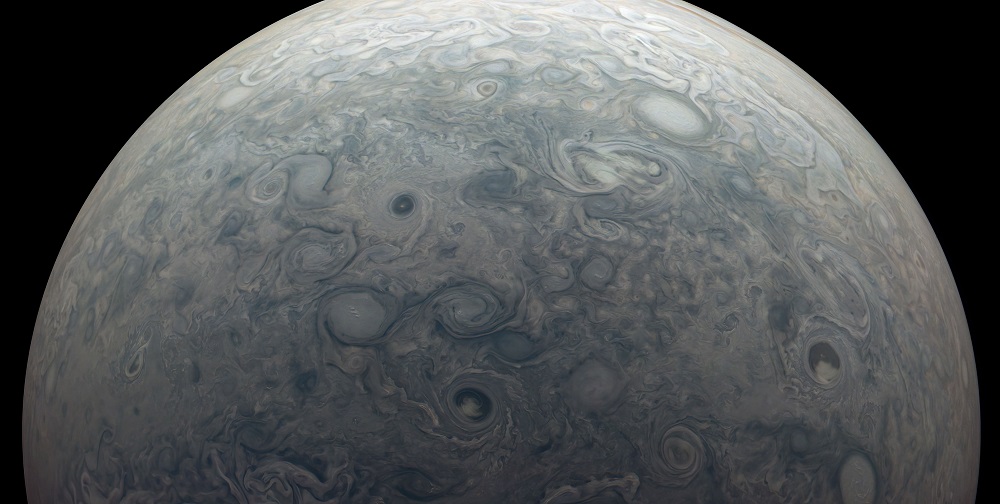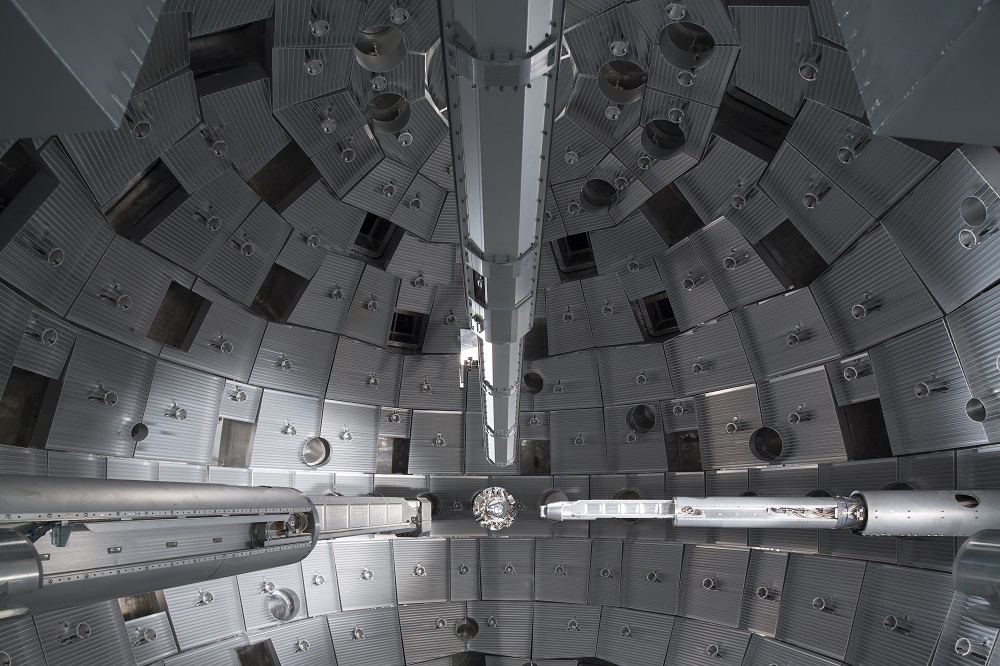Jupiter is a giant gas planet mainly composed of a mixture of hydrogen and helium (H-He). The gaseous hydrogen transforms into a very dense liquid metal deep inside this planet. In the 1970s, the American astrophysicist Edwin Salpeter predicted that when hydrogen turns into metal liquid, the helium condenses into heavier droplets that fall like rain towards the centre of Jupiter. When the Galileo space probe measured the lack of helium and neon in Jupiter's atmosphere, it was considered a direct consequence of the separation of helium and hydrogen inside the planet.
Simulating conditions on Jupiter in a laboratory to constrain the models of planet interiors
However, two recent breakthroughs seem to indicate contradictory results. On the one hand, calculations show that hydrogen and helium cannot actually separate under the thermodynamic conditions known to exist on Jupiter. On the other hand, the Juno mission measured the mass distribution inside the planet in 2016, detecting a heterogeneous area covering 15% of the planet's radius that could be explained by the separation of hydrogen and helium.

This image from NASA's Juno mission captures Jupiter's northern hemisphere around the region known as Jet N7. Kevin M. Gill / NASA © CC BY
This is why it is so important to be able to directly measure the properties of hydrogen-helium mixtures under the conditions existing on Jupiter to yield stronger constraints on the models simulating its interior. No space probe will be able to explore the profound depths of Jupiter. This why the scientific community has recreated Jupiter in a laboratory.
Experimental breakthroughs and sustained research efforts
A new experimental approach has been devised to simulate the interior of planets in a laboratory environment. Even the most advanced static compression (slow increase in pressure between two anvils) and dynamic (sudden shock in a sample) techniques are unable to simulate the extreme temperature and pressure conditions existing inside such planets. Yet the combination of such methods can achieve these conditions. The team of international scientists chose an approach based on the concept of laser-driven shock compression in diamond anvil cells, which they actually developed some fifteen years ago.
Up until recently, these studies had been conducted on helium or hydrogen targets at very low temperature in an attempt to maximise the initial density. In the approach implemented for this study, the initial density is obtained by way of compression. This has two advantages that are particularly well suited to the project, i.e.:
- It stabilises homogeneous dense H-He mixtures (demixing occurs below ~30 K)
- It achieves a much higher initial density, which then makes it possible to create dynamic compression paths in a denser and colder range of conditions.
The news shared in Nature reflects several years of hard work and more than a hundred laser shots on hydrogen, helium and their mixtures in the OMEGA laser facility at the University of Rochester in the US.
Pressures reaching 2 million atmospheres and temperatures exceeding 10,000 degrees celsius
The thermodynamic conditions were able to reach pressures of 2 million atmospheres and temperatures of around 10,000 degrees celsius, thus recreating the real conditions existing in Jupiter's interior.
The H-He mixture representative of Jupiter's interior actually has a broader immiscibility region than that originally computed. Scientists now believe that a heterogeneous area, i.e. where the helium rain falls, covers a great depth of Jupiter's interior. This result is in good agreement with the layer models recently used to recreate a cross-sectional view of Jupiter's density, inferred from measurements of the gravitational moments recorded by the Juno probe.
These experiments also helped gain a more accurate equation of states for H-He mixtures, key to developing models of planetary interiors.
High-power lasers for laboratory astrophysics
This successful collaboration owes much to the effectiveness and reliability of the OMEGA laser facility at the LLE. Though this laser-driven shock compression platform coupled with diamond anvil cells was initially developed to meet the needs of this ambitious project, it is now being used by other teams to measure mixtures said to exist in other planet interiors, such as water, methane and neon. The transition from studying H-He planet interiors to investigate other extreme conditions will benefit from much higher power levels available in other laser facilities. For instance, the laser-driven shock method combined with diamond anvil cells is now being used at the National Ignition Facility (NIF) in California, where it is capable of delivering a vast amount of energy (around 1 megajoule) to a target. It should be possible to generate shocks in hydrogen and helium samples under initial pressures of about 400,000 times those of the atmospheric pressure or more. The equations for the very dense and warm states of these two key elements in astrophysics will be measured to help better describe planets, brown dwarfs and white dwarfs. Such a platform will also be implemented in the French Laser Mégajoule facility (LMJ) in Bordeaux.

In the center of the MégaJoule Laser experimental chamber © MS-BEVIEW / CEA
[1] Lawrence Livermore National Laboratory
[2] Laboratory for Laser Energetic